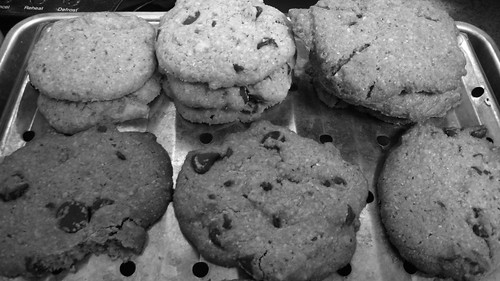Recently, Dianne Jacob—writer, journalist, blogger, teacher, writing coach, not necessarily in that order—posed an interesting question on her blog. With Apple’s new iPad coming out, will publishers rush to include video in articles intended for the web? Will writers be expected to create their own videos in addition to writing? Will web writers be paid even less than their print counterparts?
Says Jacob:
While it’s clear that the iPad is a cool new development, it doesn’t necessarily bode well for publishers or authors compared to print. According to the New York Times, royalties will initially be less. And ‘Publishers acknowledge that digital content should be priced lower than the print content,’ said Carolyn Reidy, chief executive of Simon & Schuster.
Oh joy. Yet another digital medium where we can be paid less to do more.
My three questions for you are: Do you think publishers will pay us to produce video, or will it be a separate discipline, like photography? Are we writers willing to learn this skill? (For those of you already producing video, you’re ahead of the curve.) And, am I just being a crab about this cool new medium?
You can probably guess what my opinion is, from the title of this post alone. I initially responded to Dianne’s post on her site, but I think my comments were lengthy enough to warrant a post of their own. (Who knew I’d have so much to say?)
Says I:
I think it’s necessary to distinguish the medium from the technology used to access said medium. Writers who publish online are already using video as part of their work, albeit usually with other people’s videos. To my mind, the question is how does accessing an article online differ when using an iPad as opposed to any other portable device such as a laptop or smart mobile phone. The screen real estate is larger, and presumably easier to read (and watch videos). But I honestly don’t think the iPad has completely obviated the need for the newspaper just yet. I can read the SF Chronicle on the BART and leave it lying around for the next reader. I can also read the paper on an iPad, but I’d be worried about breaking it, dropping it or having it stolen from me. If I could get a daily newspaper printed on some form of smartpaper (like the intelligent, computerized paper recently shown in the Battlestar Galactica prequel “Caprica”), I probably would.
Still, mobile technology is laggy when it comes to playing video. I avoid watching videos on my iPhone because I can’t stand waiting for the damn things to load. At least a newspaper is still there to read when the BART stalls somewhere in Oakland just before crossing the Bay, as it invariably does. Most mobile devices still fail to get a clear signal under such circumstances. There goes your video and the article in which it’s embedded. Were you wanting to click to the next page? Ah, too late!
All that said, I do think writers who publish online might want to expand their skill set if only to stay relevant. Publishers will take any lame excuse to pay people less than they ought to; the print vs. web canard is just a symptom of the industry’s failure to stay current. It’s offensive and foolish to pay online writers less money while attempting to create a strong online presence. If the idea is to create a more compelling web experience, then surely the writing being published online should be worth the money that pays for it. You get what you pay for, and if the publishing industry is paying less for online work, they’re expecting less. Not the best way to “synergize” one’s web presence. The publishing industry needs to make a fundamental shift in philosophy: web publishing is not secondary, or less than print publishing. Rather it’s a different way of distributing information, which requires a vastly different approach to the readership, the “content” (I hate that term), profits, advertising, and so on. Publishers need to stop dabbling in WWW as though it’s some passing phase, a cesspool populated by idiots and twelve year-olds. People will pay for quality (video game industry, anyone?), and quality means paying people to produce good work, including writers, photographers and, er, the folks who make videos (videographers?).
Head over to Dianne’s site to read the other comments, and leave one of your own.


